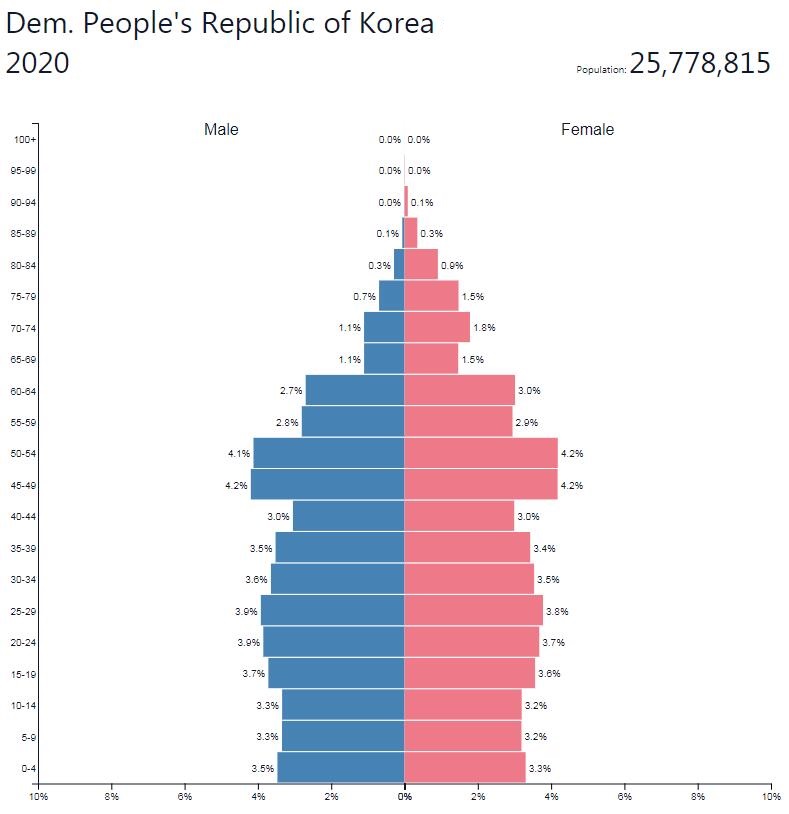
The population density is 199.54 inhabitants per square kilometre, and the 2014 North Korea tends to be a mysterious country and does not share information with the outside world. The Central Bureau of Statistics of North Korea conducted the most recent census in 2008, where the population reached 24 million inhabitants. Population Details: The demographics of North Korea are determined through national censuses and international estimates. Demographics of North Korea - Wikipedia.
All Koreans speak the Korean language, whose relationship to other languages is disputed it may. The North Korean population, which has been largely isolated since 1945, is almost entirely Korean a tiny number of Chinese constitute the only other significant ethnic group. The life expectancy of North Koreans is 69.81 years.Population of North Korea KTG North Korea information on the DPRKs age structure, religions in North Korea, languages and general statistics on life.North Korea - North Korea - People: The Korean peninsula is one of the most ethnically homogeneous regions in the world. There are 14.51 births per 1,000 individuals here and 9.18 deaths per 1,000. The number is expected to grow to 24.55 million by 2100. Its population, for example, has been estimated at 24.45 million by the UN Population Division.
This equates to approximately one-third of the population. These military branches have an additional 600,000 reservists and 189,000 active paramilitary troops. Another 1.19 million are on active duty in the Army, Navy, and Air Force. Approximately 5.7 million people serve as reservists in the Peasant Red Guard. Despite its concerning level of increasing hunger, the country has a large military force which involves millions of the population.
The vast majority of the population speaks Korean. Since 2000, North Korea's birth rate has exceeded its death rate the natural growth is positive.Because of its closed relationship with the rest of the world, Korea has a highly homogenous culture. In 1980, the population rose at a near consistent, but low, rate (0.84 from the two censuses). North Korea ranks 47th when compared to other countries population.The population density is 199.54 inhabitants per square kilometre, and the 2014 estimated life expectancy is 69.81 years.
And dispositions of the various demographic groups within the country.The Constitution ensures the right to freedom of religion. In fact, the North Korean language has eliminated any words or character of Western, Chinese, or Japanese origin.However, CSIS Beyond Parallel research shows that North Korean citizens do not. This dialect does not utilize any English or Japanese loanwords as does the dialect of South Korea. In North Korea, the Pyongyang dialect is spoken.

The North Korean government restricts the migration of people entering and leaving the country. In practice, this country does not uphold the agreement. Immigration And Emigration: Laws And RestrictionsNorth Korea is a member of the International Covenant on Civil and Political Rights, which allows for the free movement of people to leave any country, including their own. With the exception of a very small Chinese and Japanese community, as well as a few ethnic Thai, Indian, Singaporean, Vietnamese, Africans, and Americans, the people living in this country are all of North Korean descent.
The majority of these individuals come from South Korea on business, as investors, or on vacation. People coming into the country are mainly on temporary visas. The government does send some independent contractors to work abroad temporarily. Reports from these camps indicate high levels of death and torture. If a person is caught illegally emigrating, they are arrested and placed in penal labor camps for sentences of between 2 and 7 years.


 0 kommentar(er)
0 kommentar(er)
